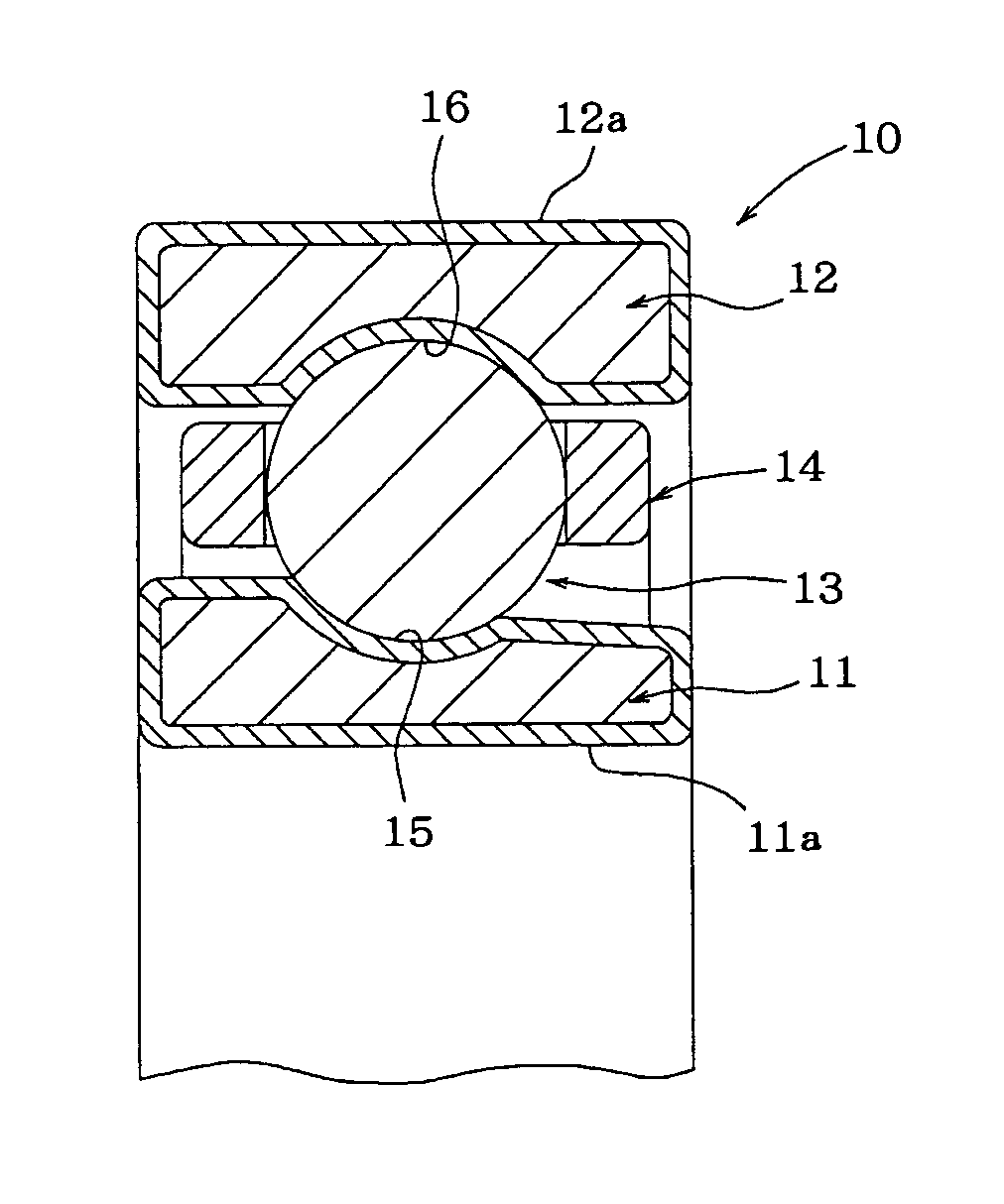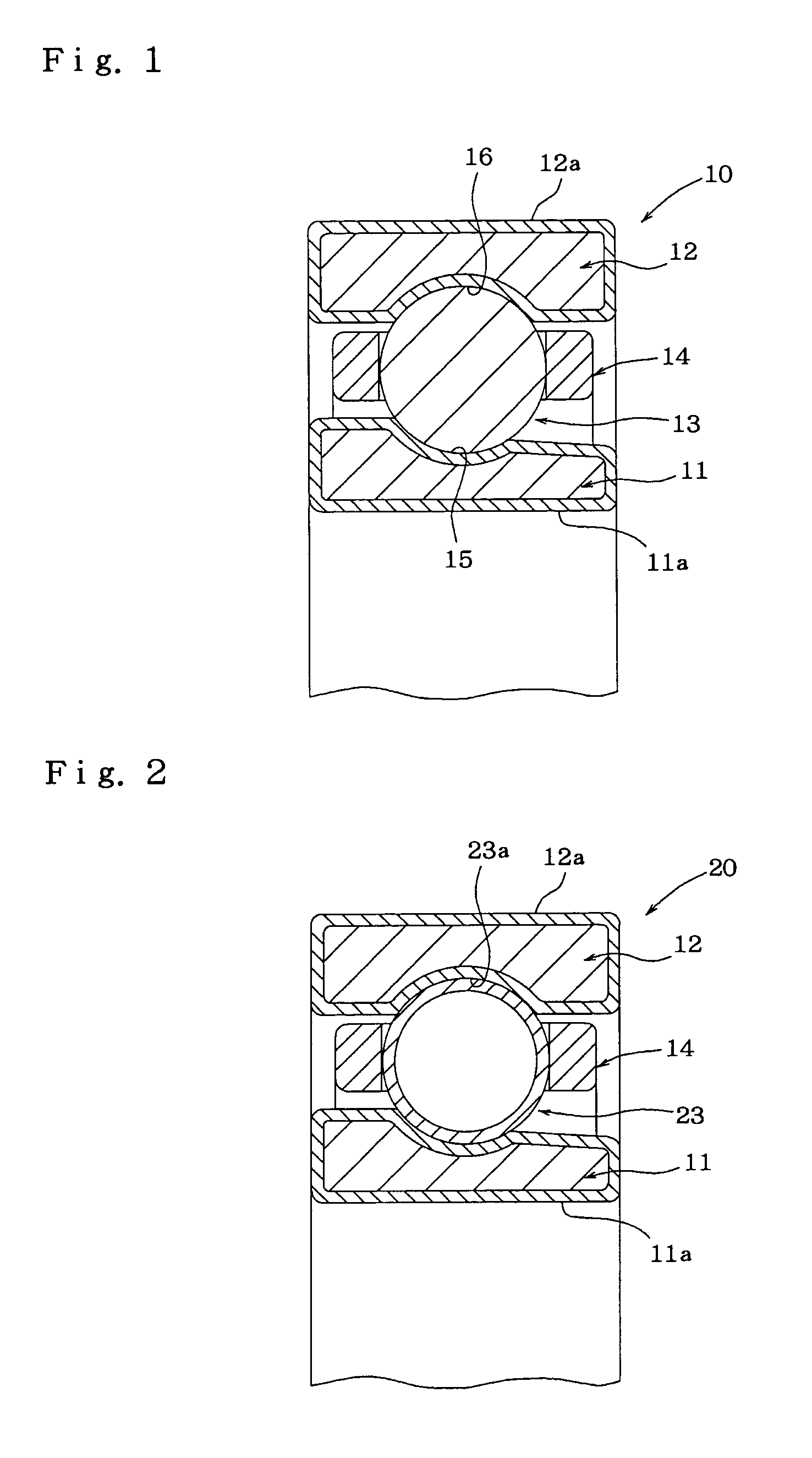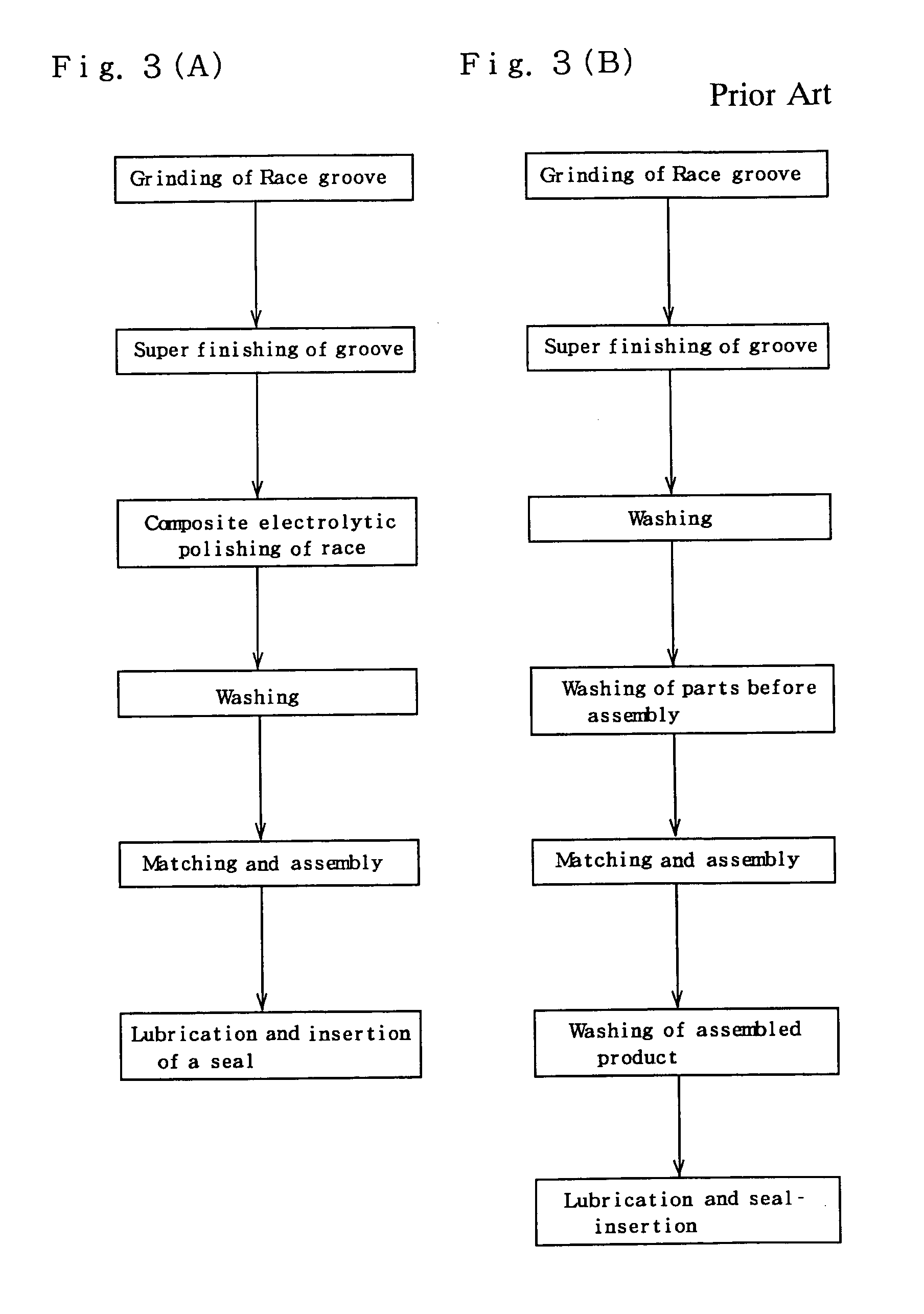Rolling-bearing and bearing unit
a technology of rolling bearings and bearings, which is applied in the direction of rotary machine parts, mechanical equipment, chemistry apparatus and processes, etc., can solve the problems of difficult to reduce contamination any further using just this method, difficult to remove very small burrs from machined surfaces, and difficult to remove remaining abrasives, especially sticked thorn-like abrasives
- Summary
- Abstract
- Description
- Claims
- Application Information
AI Technical Summary
Benefits of technology
Problems solved by technology
Method used
Image
Examples
Embodiment Construction
[0039] A bearing outer race made of SUS440C was prepared and composite electrolytic polishing was performed for it. After a suitable amount of particles were made to adhere to the surface, the outer race was washed. Washing was performed by immersing the outer race in a clean solution and then irradiating it with supersonic waves. After each specified interval of supersonic irradiation, the particles having a size of 1 .mu.m or greater and that were released into the solution were counted by a particle counter in the solution. The surface roughness Rmax of the outer race for which the composite electrolytic polishing process was performed was 0.3 .mu.m for the inner-diameter surface and outer-diameter surface, and 0.27 .mu.m for the end surfaces.
[0040] As a comparison, a bearing outer race made of SUS440C was prepared without composite electrolytic polishing performed for it. After a suitable amount of particles were made to adhere to the surface, the outer race was washed and the p...
PUM
 Login to View More
Login to View More Abstract
Description
Claims
Application Information
 Login to View More
Login to View More - R&D
- Intellectual Property
- Life Sciences
- Materials
- Tech Scout
- Unparalleled Data Quality
- Higher Quality Content
- 60% Fewer Hallucinations
Browse by: Latest US Patents, China's latest patents, Technical Efficacy Thesaurus, Application Domain, Technology Topic, Popular Technical Reports.
© 2025 PatSnap. All rights reserved.Legal|Privacy policy|Modern Slavery Act Transparency Statement|Sitemap|About US| Contact US: help@patsnap.com



